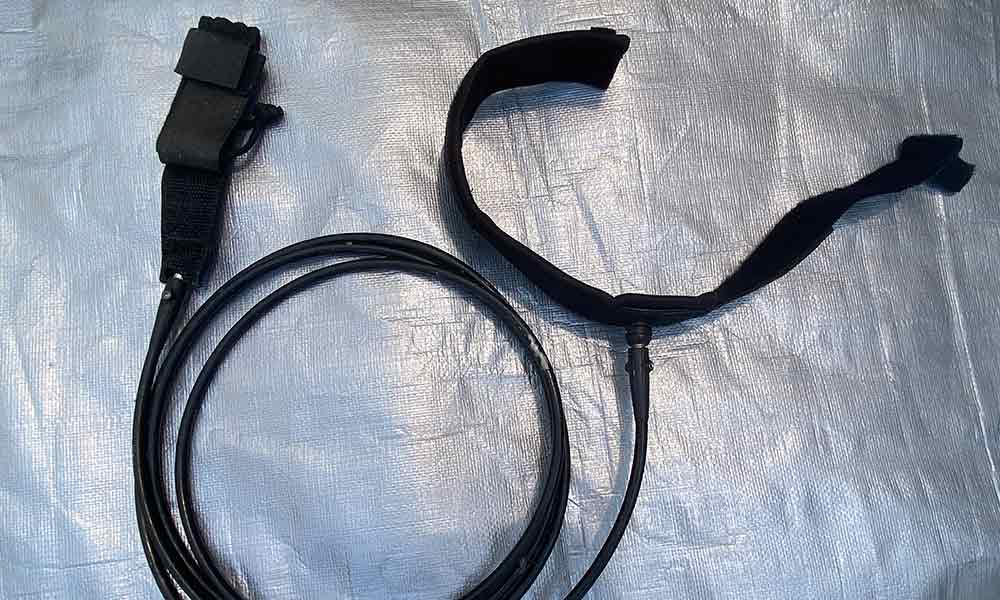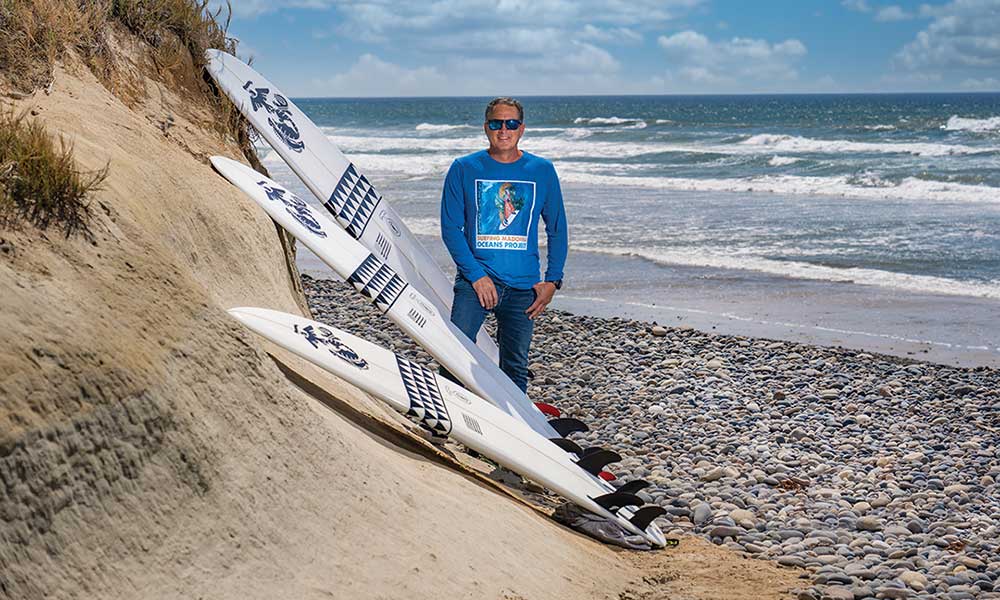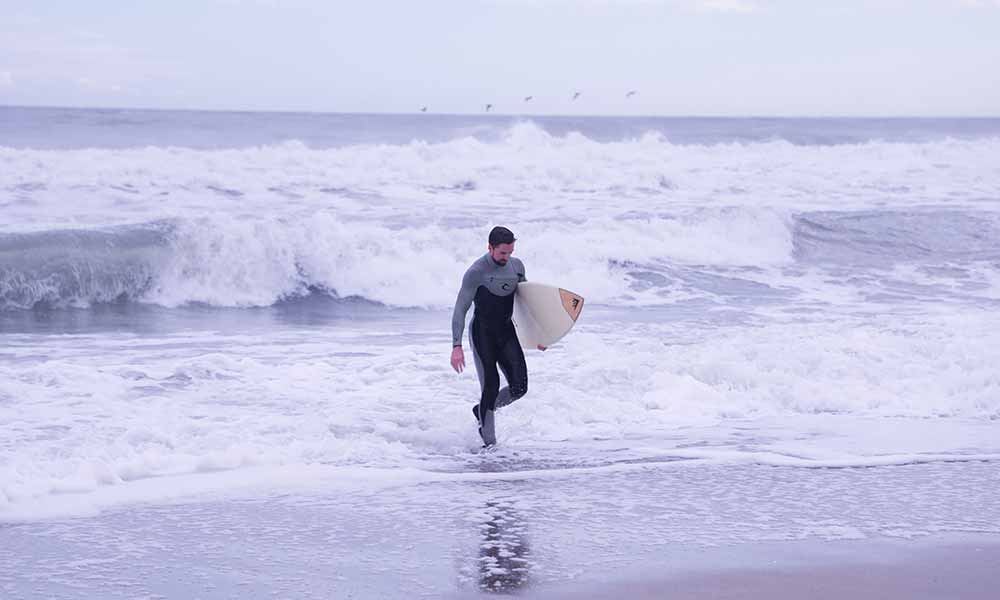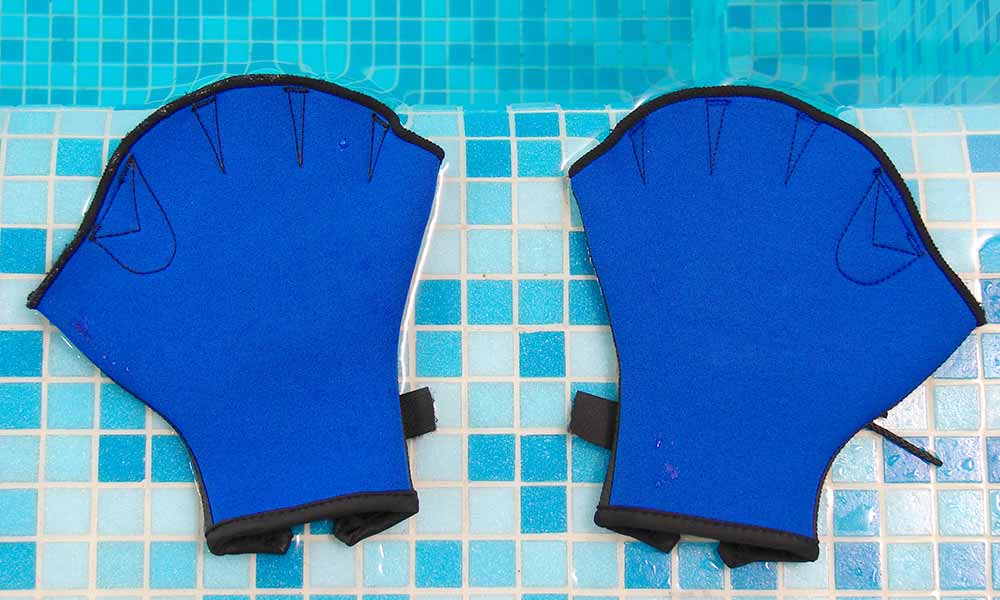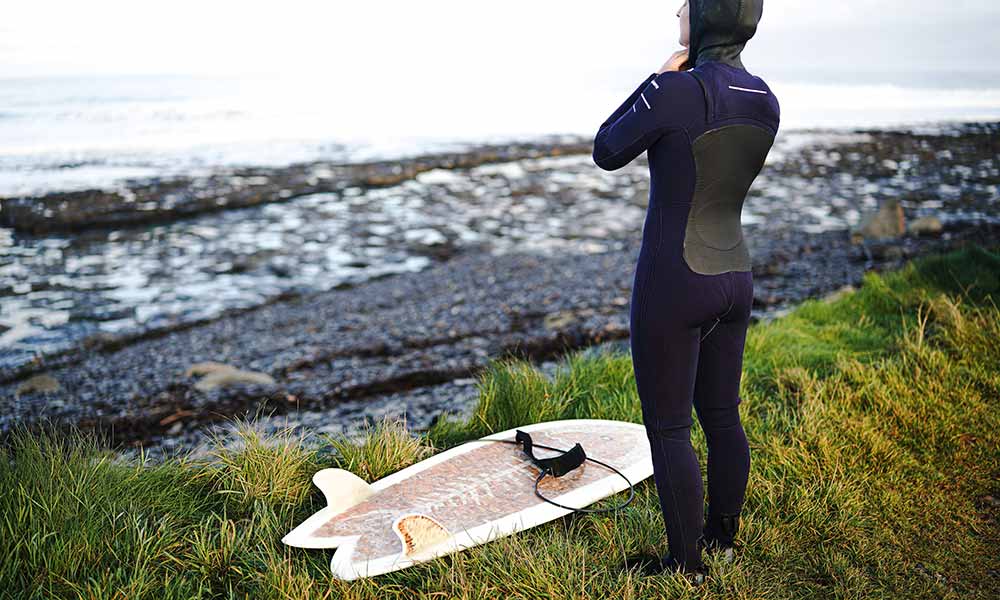The surfboard leash was invented in the early 1970s by Pat O’Neil. As the son of Jack O’Neil, inventor of the O’Neil Wetsuit, and a keen surfer himself, Pat understood the frustrations of scrambling to retrieve a surfboard following a wipeout.
The first time Pat wore his leash on his surfboard in an event in Malibu, he was disqualified.
Other surfers at the time called the leash the “kook cord”.
There were concerns that the leash would lead to serious injuries as surfboards bounced back and struck the surfers.
In fact, Jack O’Neil lost his eye because of an overly elastic surfing leash the caused a surfboard to spring back too quickly and hit him in the eye.
The surfboard leash has been refined quite a bit since the 1970s and today is commonplace in any surfing lineup.
Today, leashes or “leg ropes” are considered to be an essential accessory for surfers, prevents more injuries than it causes, and saves surfers a lot of time and money in the process.
parts of a Surfboard Leash
A surfing leash has several different components:
Cuff
The cuff of the surf leash is a Velcro attachment that fastens the leash to the surfer’s ankle or just above your calf.
Some leashes contain pockets where you can store valuables such as your keys.
Swivel
The purpose of a swivel or double swivel is to allow the surfing leash to spin and twist without getting tangled and causing problems for the surfer.
There is typically one swivel that connects the rail saver to the surfboard and one swivel that connects the leash to the cuff.
Cord
The cord is often made from polyurethane and can vary in thickness, with thicker cords being less likely to snap and more likely to create drag.
The bigger the waves you surf, the thicker the leash. For example, performance leashes that are designed for surf up to 6′ are much thinner than leashes designed to surf Mavericks.
Rail Saver
A rail saver is the part of the leash that attaches to the surfboard.
It’s about an inch wide, 6″ long and is made of soft yet durable material.
The purpose of the rail saver it to provide a safe and secure connection between the surfer and the surfboard.
The rail saver prevents the leash chord from ripping through the tail of the surfboard which was known to happen from time to time before the rail saver was added to the leash.
Hence the term, “rail saver.”
The rail saver can be easier to grip underwater than the cord which can get wrapped around a surfer’s hand and can be quite painful if the cord tightens around the hand when the surfboard is dragged by the wave.
How to choose a surfboard leash
How Long Should Your Surfboard Leash Be?
Ideally, a surfboard leash should be equal to or longer than the length of your board, which means you will need a different leash for a shortboard than the one you use on a longboard.
How Thick Should A Surfboard Leash Be?
The thickness of the surfing leg rope also needs to be considered.
Thicker leashes provide more durability and stretch, and they are less prone to snapping.
However, thicker surfboard leashes also create more drag, and if you’re in a surfing competition in smaller surf looking for every edge that you can get, you will want to have a thinner leash.
Your Surfboard Leash Questions Answered
How To Attach A Leash To A Surfboard
To attach your leash to your surfboard, you should first feed the leash string through the leash plug.
Simply tie both ends of the string together and then loop one end through the plug.
Attach the rail saver with the Velcro straps and make sure the string is short enough so that when you rotate the leash, only the rail saver, and not the string, touch the rails.
Attach the cuff to the ankle nearest the tail of your board, and you’re good to go!
How to take care of your surfboard leash?
Take care of your leash and your leash will take care of you. Here’s how.
- Rinse your leash off with fresh water after every surf session, especially the parts that are metal and are more likely to corrode.
- Don’t wrap your leash around your surfboard fins. Fins are sharp and they can give your surf leash micro cuts that eventually can lead to a broken leash.
- Don’t drag your leash on the sand, asphalt, or dirt ground where it can get caught on something or get damaged by glass, a shell, or some other sharp object.
When should I replace my surf leash?
All leashes will break in time and you want to replace your surfboard leash before it breaks.
If you surf bigger waves, say 10 feet and bigger you want to get a new leash for the next big-wave season.
If you surf smaller waves up to 6 – 8′ then you can expect to get a new leash every 3 – 4 years.
You should consider getting a new surfing leash immediately if you:
- See nicks or cuts in your leash cord.
- See the damage to or corrosion on metal parts.
- Notice the metal parts are not swiveling like they used to.
- See the color of the surfing leash cord changing.
Do pro surfers wear leashes?
Yes, pro surfers wear surfboard leashes.
While you may see a local pro at your surf break or in a video not wearing a leash on their surfboard in smaller waves even the pros wear leashes when the waves get bigger.
No one wants to lose their surfboard and see it get washed onto the rocks or even worse, hit another surfer.
Do all surfboards have a leash?
All modern surfboards, including shortboards, fishes, mid-length surfboards and longboards have a leash plug to attach the leash.
Some surfboards have two leash plugs that sit on either side of the stringer.
This gives surfers options as to which side they prefer their leash to be tethered.
Sometimes you will get an older leash when you buy a second hand surfboard.
In this case we recommend you buy a new leash for your new-to-you surfboard. It’s better to be safe than sorry.
Why do longboarders not wear leashes?
Many longboarders do not wear leashes because the leash can interfere with them walking up and down the surfboard.
Other surfers may choose not to use a surfing leash on smaller days to lessen the drag that leashes create when paddling and riding waves.
Are surfboard leashes dangerous?
Overall, the benefits that surfboard leashes provide, specifically preventing loose surfboards in the surf zone, far exceed the dangers of surfboard leashes.
Leashes Spring Back
Surfboard leashes don’t nearly have as much spring in them as they did in the early days.
However, you may find that you accidentally pull the surfboard towards you after you wipeout which could result with the board hitting you in the face or head.
Leashes Can Get Caught On Things
Surfboard leashes can get hooked on reefs, rocks or other objects under the water which can prevent a surfer from getting to the surface.
This scenario is more likely for surfers who surf waves like Pipeline in Hawaii that have jagged reefs that the leash cord can get hooked on.
The more likely scenario is that your leash and the leash from another surfboard could get tangled in the surf zone after a new near miss followed immediately by a wipeout.
You can find yourself detangling surfboards in the surf zone which can be dangerous.
To prevent this, steer clear of other surfers as best as possible.
Leashes Are Used As A Safety Net
Your leash is not a lifeline to a floatation device (read: your surfboard).
Your leash is not meant to save you from the ocean because you are not a good swimmer.
A leash is helpful, very helpful in some cases, but you shouldn’t relay on your leash always being there when you think you need it.
This is probably the most dangerous thing about leashes … the misplaced feeling of safety they give surfers.
When did surfers start using leashes?
Surfboard leashes started to become mainstream shortly after they invented in the early 1970s.
What is a leash plug?
A surfboard leash plug is the little cup that is glassed into the deck of the tail of a surfboard.
The leash plug is about 1″ in diameter and has a metal bar that runs through the center of it.
This is where you attach your surfboard leash to your surfboard.

